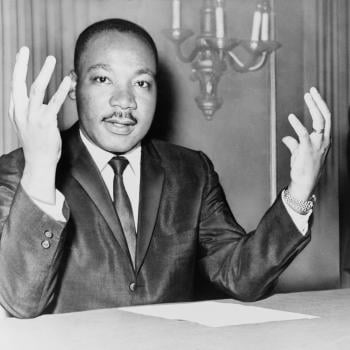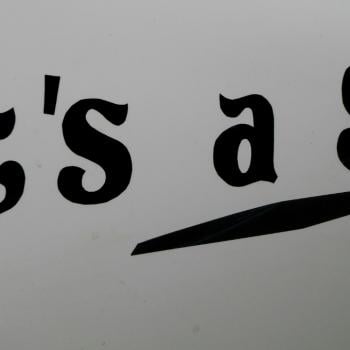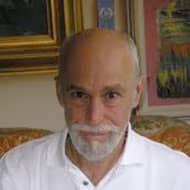Editors' Note: This article is part of the Patheos Public Square on the Future of Faith in America: Eastern Religions. Read other perspectives here.
Five years ago, Patheos honored me, as then Buddhism Editor, with the gathering of voices for its first Summer Public Square. The topic: The Future of Buddhism. Returning to that topic, now, in terms of the West, I can spotlight some interesting recent trends. (As I don't regularly cultivate opinions, that seems to be my strong suit these days in the blogsophere.)
In 2009, a distinctly Western trend became apparent. Ajahn Brahm, a Thai Buddhist monk (born Peter Betts), facilitated in the ordination of four women as nuns. For this, he was expelled from his order. This seminal event seems to be a watershed moment in the evolution of a Western Buddhism. Traditional Thai Buddhists don't recognize women nuns; Western modernists obviously do. So these vectors seem to be evolving in parallel. (As I write, the annual conference of Sakyaditha, an international association of Buddhist women, is meeting in Indonesia, and thus we sense the influence of the West upon the East, another ramification of Western Buddhism as it evolves.)
More recently, a number of events have attested to a growing momentum of the evolution of a Western Buddhism. In May 2015, 125 U.S. Buddhist leaders were invited to the White House. As one attendee reported, this may be the first of a series of such occasions. Apparently, it served to allow voices from the Buddhist community to address issues of concern to all humanity, not just Buddhists and it provided a space for various lineages and schools to show themselves to each other. (A key player in the creation of this initiative has been Soka Gakkai, International, SGI, not commonly heard in the Buddhist discourse.)
This dialogue across Buddhist schools has been occurring around the planet, given globalization. In the West, cross-cultural exchange within Buddhism is more easily facilitated since Western democratic society implies civic society, transcending borders of national culture.
I pause here to point out a curious contrast within four different schools of Buddhism, in terms of East and West. Theravada, originating in Southeast Asia, is considered Original Buddhism, keeping intact the traditions as set forth in the original beloved community (Sangha) of the Buddha. Yet, in the West, it seems the most free to innovate and adopt others' teachings: Zen and Vajrayana, as well as Sufism, contemporary poets, and Western psychology. Zen stakes out a kind of middle ground, adhering to traditional practice while adopting new resources, generation by generation. Vajrayana, in the East, lays claim to being the most recent development; in the West, it is the most conservative (in part, due to being seen as an endangered culture, in Tibet).
Diversity — or inclusivity — remains another area for further development within Western Buddhism, as well as globally.
Buddhists of various ethnic backgrounds have joined the recent Black Lives Matter movement, pushing back on institutionalized racism in American society. From a white perspective, I can vouch for the efficacy of a Buddhist-inflected resource such as White Awake. For a model of an inclusive, diverse Buddhist community, focusing on the disenfranchised and marginalized, East Bay Meditation Center continues to be a beacon for us all. And I can heartily recommend the new book by Earthlyn Zenju Emmanuel, The Way of Tenderness, on several interwoven fronts.





